Read this FAQ page. If you don’t find here the information you need or if you are looking for more information, there are some sites all over the NET that you may consult:
Here is a list of those organizations:
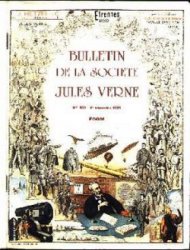
|
|

|
|

|
|

|
|

|
|

|
|
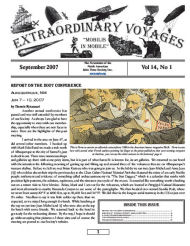
|
|
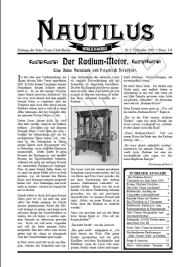
|
|
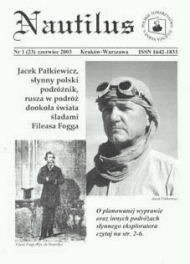
|
|
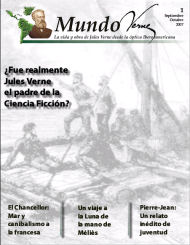
|
|
Jules Verne was born on the 8th of February, 1828 in Île Feydeau, in the city of Nantes, France. His full name was Jules Gabriel Verne, and he was the first of five children born from the marriage between his father, Pierre Verne, a Parisian lawyer, who came from a lineage of jurists of the city of Provence and his mother, Sophie Allotte de la Fuÿe, of Breton and Scottish origin. After Jules, were born Paul in 1829, and three girls: Anna in 1836, Mathilde in 1839, and Marie in 1842.
Neither his father, Pierre Verne, nor his mother, Sophie Allotte de la Fuÿe, had any special inclination for Literature. Pierre Verne is known to have written some songs in his youth, but he avoided all publicity. His songs were only sung in the family, very few of them got into print. In fact, Verne’s father obliged Verne to go to Paris to study Law, assuming that he would replace him as a lawyer in the city of Nantes. He wanted his son to be a lawyer, not a writer.
Verne wrote a lot in his youth. He wrote poems (quite a lot actually), short stories, plays and songs. Most of them were published in Musée des familles, a magazine that was edited in Paris. Some years later, when Verne began to be famous, many of those short stories and plays — chosen by his editor — appeared in some volumes of his well-known series of books. Also, a book with a collection of his poems and songs was published recently.
Jules Verne was already 35 when his first novel, Five weeks in a balloon, was published in January 1863. He had written the novel in 1862, and at that point he began to visit all the Parisian editors. After some days, he found Jules Hetzel, who was one of the most famous editors of the time. Verne gave the novel, titled Un voyage dans les airs, to Hetzel, who suggested the needed corrections to publish the manuscript. The publication had a brilliant success. Verne had stepped into a new field: Geography and Science into Literature.
Yes, he was married. The name of his wife was Honorine Deviane (her maiden-name was Morel). She was a widow with two children. On May 20, 1856 Verne went to Amiens to participate in a friend’s wedding. There, he met Honorine, and after eight months, on January 10, 1857 they got married and both went to Paris, where Verne spent some years. Four years later, on the 3rd of August of 1861, his first and only child, Michel, was born.
In 1859, he made a trip to England and Scotland, together with his friend Aristide Hignard. His itinerary was: Bordeaux, Liverpool, Edinburgh, Scotland, London, etc. The recently published novel Backwards to Britain was inspired by this trip.
In 1861, Jules Verne went to Scandinavia, specifically to Norway and Denmark, again with Hignard. While he was away, Honorine gave birth to his son Michel.
In 1867, Jules Verne and his brother Paul embarked on the Great Eastern for a journey to the United States. They spent only a few days in this country, visiting New York and the Niagara Falls. His impressions are given in the novel A floating city.
In 1872, he visited London and Woolwich.
Between 1871 and 1873 he went to Jersey, Guernsey, and Sark (invited by Hetzel).
In 1876, he made a trip to the coastal England.
In 1878, Verne made a large trip on his yacht the Saint-Michel III. He visited Lisbon, Tanger, Gibraltar and Algiers.
In 1879, he sailed to England and Scotland, again with the Saint-Michel III. He visited Yarmouth, Edinburgh and Dover, the Hebrides, etc.
In 1880, he went to Ireland, Scotland and Norway.
In 1881, he made a trip to the Netherlands, Germany and Denmark, on board of the Saint-Michel III. Paul Verne wrote about this trip in the short story From Rotterdam to Copenhagen.
In 1884, Verne cruised the Mediterranean with his Saint-Michel III, visiting Algeria, Malta, Italy and other countries.
In 1887, Jules Verne made a tour through Belgium and the Netherlands, where he read his short story The Rat family.
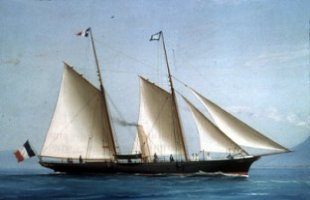
Saint Michel III
|
During his youth, Jules Verne lived in Île Feydeau in Nantes. His family also had a house in Chantenay, near the city. In 1847, he went to Paris to study Law. After his marriage, the Verne family lived in Paris for a couple of years, then moved to Auteuil (now a district of Paris) and later to Le Crotoy. In 1871, Jules Verne settled in Amiens, where he would continue to live for the rest of his life, first at Boulevard Guyencourt 23 (1871-1873), then at Boulevard Longueville 44 (1873-1882), Rue Charles-Dubois 2 (1882-1900) and again at Boulevard Longueville until his death in 1905. |
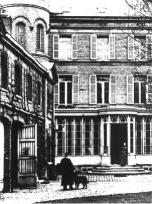 Rue Charles-Dubois 2 |
|
In 1888 Jules Verne was elected into the City Council of Amiens. He specialized in cultural affairs, such as theatres and schools and urbanism. He inaugurated the Cirque Municipal in 1889. Verne was re-elected in 1892, 1896 and 1900. |
 Cirque Municipal |
Yes, he was. Almost any writer of his time was, and it was something common to make statements against jews, germans, indians and other races. Also, this type of character was common in 19th century literature. The catholic and bourgeois society of his time had taught everybody to think that way. In defense of the french author, many have said Verne was not as anti-Semite as other writers from his time were. The image of Verne as an anti-Semite is largely due to the character of Isac Hakhabut from his novel Hector Servadac. It is useful to point out that the word “anti-Semite” in this context doesn’t have destruction and Holocaust connotation that it acquired after Second World War.
It has been said for a long time now that when he was a boy, Verne bought a place on the three-mast Coralie, so he could go to the Indies just to get his cousin Caroline, with whom he was in love, a coral necklace. This story was first presented by Marguerite Allotte de la Füye in her biography about the french author. Recently, it has been discovered the story was fake. All the details she gave are impossible. Besides, she described two contradictory versions of the story. There may, however, be some truth in this legend, since Volker Dehs quotes a source from 1909, Paul Eudel, who told that at the age of 11, young Jules once took a small boat and tried to catch up with the Octavie, en route for the Indies.
It is unknown when was the first time this myth came around, but we can assure you this statement is completely false. Verne did travel a lot. You can go in this same page to question B6 that lists the countries which Jules Verne has travelled to. Nevertheless, Verne wrote many of his novels using the data he found at some of the several newspapers he used to read every day. This way, he could describe whole territories of some countries he didn’t ever see.
This is a common statement in many countries. Some of them have claimed he had found inspiration for some novel while he was visiting their countries. Actually, this statement has came from people in Slovakia, Switzerland and Turkey. The truth is Verne never visited these countries and it is highly probable these myths have been caused by the very vivid descriptions the author gave of so many places on Earth. For more information and details about Jules Verne’s myths and legends we strongly recommend you go to Jules Verne’s myths page available at http://www.phys.uu.nl/~gdevries/myths/.
This is one of the most widespread myths about Jules Verne. The tomb, located in the Madeleine cemetery in Amiens, does have Jules’ and Honorine’s names on it. Besides, there is a sculpture designed by local sculptor Albert Roze, erected on the grave in 1907, having the image of Jules Verne emerging from his tomb and rising his right arm towards the sky. Vers l’immortalité et l’éternelle jeunesse (To the immortality and eternal youth) is its title. It is not written anywhere.
No. This legend came after the publication of Jules Verne: initié et initiateur, a book by Michel Lamy. The author tried to demonstrate that Jules Verne was associated to some esoteric society, and extensively discussed about the fact that Jules Verne gave some clues about the royal treasure of Rennes-le-Château in his novel Clovis Dardentor.
We're not very fond of the image of Jules Verne as a prophet and you may notice there is a difference between predicting and describing. A prediction is a reference to something that has not happened yet. A description, in this case, could be taken as a reference to something that has been described before by others. Here is a list of some of the most famous descriptions, made by Jules Verne in his books, that lately have been considered as predictions:
What follows is a list of those things people think Jules Verne predicted, but he really never even mentioned in any of his books.
|
Jules Verne wrote this book in 1863. He gave the manuscript to Hetzel, who refused it. He told Verne that the subject of the novel was so pessimistic, that the publication of this novel could be a real disaster for the reputation of Jules Verne as a writer. That was the reason why Hetzel did not publish the manuscript. After this, Verne filed the novel between his papers, and 130 years later, the manuscript appeared. The family had kept the manuscript, even if the vernian scholars knew about its existence. Then, the manuscript was discovered, by chance, in 1990 by Verne’s great grandson. He found it in a safe deposit that Michel had thought was empty and also he had lost its key. In 1994, it was published in France, by Hachette, and immediately had a great success. |

|
It was his editor, Jules Hetzel, who gave that name to the collection. Three novels had already been published with success, when Hetzel came to the idea to have a general collection title. In the prologue of Journeys and adventures of captain Hatteras, Hetzel wrote that the goal of Verne’s Extraordinary Voyages was “to outline all the geographical, geological, physical, and astronomical knowledge amassed by modern science and to recount, in an entertaining and picturesque format...the history of the universe”.
The first true story of this series is Journeys and adventures of captain Hatteras, if we take into consideration that Hetzel began to name the series, when this novel was published.
Phileas Fogg began his journey around the world on October 2, 1872. He left London at 8:45 PM, and went to the East. After visiting many countries all around the world, Phileas believed he arrived London on December 21 at 8:50, that is to say, with a delay of 5 minutes. Therefore, he thought he had lost his bet. Finally, Fogg discovered he really arrived on December 20 at 8:50, after 79 days, so he had won his wager! The explanation is: Phileas, without suspecting it, had gained one day, because he went to the East. For each degree he travelled to the East, he gained four minutes. So, since the circumference of the Earth has 360 degrees, this makes 360×4=1440 minutes or 24 hours!
The two best-known titles are Twenty thousands leagues under the seas and Around the world in 80 days. These have been adapted to theatre, cinema, television series, and they have been reprinted in many languages all around the world many times.
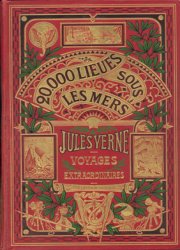
|
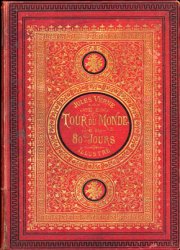
|
Jules Verne wrote mainly adventures stories, Wells wrote Science Fiction stories. Wells is the true “father of SF”. Verne described his machines based upon certain knowledge of his time, and he matured that idea or that knowledge, and developed it. Verne explains his inventions very well, and with a lot of details. Wells, on the other hand, invented his machines, which were not based on any scientific knowledge of his time. His machines were constructed with materials that did not exist, and the phenomena that occur in Wells’ stories are not quite explained. They are just Science fiction.
Due to his success, Verne had to face the attacks of two unsuccessful and embittered writers. The first, Edouard Cadol pretended to be the co-author of Around the world in 80 days, after a brief and unsuccessful collaboration with Verne to write a draft for a play, before the publication of the novel. Finally, there was not any lawsuit, but Cadol had got as many rights over the play as Jules Verne himself.
After the publication of Journey to the centre of the Earth, Verne was attacked by Léon Delmas, who had published some short stories under the name of René de Pont-Jest. He accused Verne of having plagiarized his short story titled La tête de Mimer that was published in a magazine that Verne said he had not ever read. The “plagiarism” was just a matter of a coincidence regarding the journey to the centre of the Earth. While Pont-Jest described the lunar shade, Verne talked about the solar shade. The lawsuit was held in 1877 and Verne was found innocent.
In Facing the flag, written in 1897, Jules Verne wrote about the inventor Thomas Roch, whose character was inspired by the French chemist Eugène Turpin, who had invented the melinite (an explosive), and tried to sell it to the French government in 1885. The government refused. In the novel, Roch had a nervous breakdown after several countries refused to buy his invention. In Verne’s correspondance with his brother Paul, he frequently refers to “le Turpin”, meaning his character Roch, or the novel Facing the flag. Verne’s Roch had an astonishing resemblance with Turpin. Then, Eugène sued Jules Verne, who was defended by Raymond Poincaré. Finally, Verne was found innocent of those imputations. However, a letter from Jules to Paul suggested that he did indeed base Roch on Turpin.
Jules Verne published in 1864, Edgar Poe and his works, an article in four chapters and it was published in the magazine Musée des familles. In this article he made an in-depth analysis of the works of the famous North American writer Edgar Allan Poe. In fact, Verne’s novel The sphinx of the ice is a sequel to Poe’s Narrative of Arthur Gordon Pym, and also it was said that Verne was inspired by a Poe’s tale titled Three Sundays in a week to write his famous book Around the world in 80 days. Besides, the cryptograms or secret messages that had an important role in novels such as Journey to the centre of the Earth, The jangada, and even The children of captain Grant could have been inspired by Poe’s The gold bug.
It was Voyage dans la Lune filmed by Georges Méliès in 1902. It was inspired by Verne’s From the Earth to the Moon.

We don’t know. The worth may vary. It depends on many things: the condition of the book (if it is new or used), the kind of the edition, etc... Also, an old book is seldom the first edition. The terms original or first edition have a very precise meaning. For example, an original edition of a book written by Jules Verne is not the same as a first illustrated one. For better information, we suggest you to consult your local antiquarian.
No. This signature was reproduced in all copies of this novel, in the original edition. All Hetzel illustrated in-octavo editions of Clovis Dardentor have Jules Verne’s signature printed on the first page. He dedicated this book to his three grandsons.
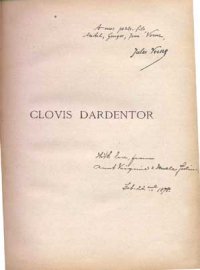
|
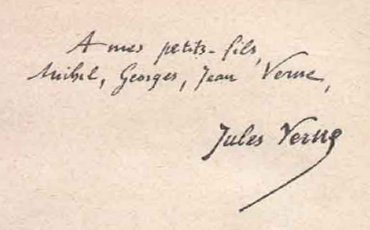
|
Yes, he did. He collaborated with Adolphe d’Ennery who turned some of his novels into plays. He also collaborated with Gabriel Marcel, when he was writing his History of the famous travels and travellers. Marcel was a librarian at the National Library of Paris. Verne could speak and read only French and much of the information he had to take into account was written in foreign languages. So it was necessary to organize cooperation with Marcel. They also collaborated when Verne was writing La conquête économique et scientifique du globe, though this work was neither finished nor published. Besides, it is said that Verne wrote the novel titled The wreck of the Cynthia (this novel does not belong to the series known as Extraordinary Voyages) in collaboration with André Laurie, but it has been said recently that he only did a validation work, and his name was only added for commercial purposes. Before that, Verne had deeply changed two manuscripts written by André Laurie. Those two texts became two novels signed by Jules Verne: The 500 million of the Begum and The star of the South. Verne collaborated with Théophile Lavallée when the latter was writing his Géographie illustrée de la France et de ses colonies. Lavallée died in 1866 and he only had written the introduction. Hetzel asked Jules to finish the work. To be complete, we also might mention the great number of specific collaborations that Verne received to write some of his novels. Some of them are known; for instance those that he received from two mathematicians: his cousin Henri Garcet and Albert Badoureau. The first did all the mathematical calculations for From the Earth to the Moon and the latter helped in the writing of Topsy turvy. Paul Verne, his brother, was another collaborator. He collaborated in all the novels concerning the sea and the marine. Finally, Hetzel must also be considered as a regular collaborator. He was the first reader of Verne’s manuscripts. The correspondence between them - currently under publication - and the analysis of the original manuscripts shows that Hetzel made many suggestions and even he imposed some of the changes that deeply modified the original writings.
It was no mistake. At first view, it seems that Jules Verne made a mistake while wanting to make coincide the action of three of his novels: The children of captain Grant, Twenty thousand leagues under the seas and The mysterious island. In The children of Captain Grant, history took place between 1864 and 1865. At the end of the story, in March 1865, Ayrton is abandoned in an island. In The mysterious island, the action took place between 1865 and 1869. It was in December 1866 that Cyrus Smith and his friends found Ayrton. He declared them he had been abandoned in this island twelve years ago, that is to say since 1854. When Ayrton made the narration of his story, he situated the action between 1854 and 1855 and more precisely he had been abandoned on March 18, 1855. That was ten years before the date mentioned in The children of captain Grant. Also, in The mysterious island, at the end of the novel (1869), Cyrus Smith told Nemo that he knew him, because he had read the book written by Aronnax during his voyage aboard the Nautilus. Then Nemo said that it had been sixteen years since this man had left the Nautilus. That brings us back to 1853. However, the action of Twenty thousand leagues under the seas took place in 1866. The truth is that both, Jules Hetzel and Jules Verne knew about this paradox and they accepted it. There are two footnotes in the original French edition of The mysterious island where the publisher admitted the existence of date discrepancies with both The children of captain Grant and Twenty thousand leagues under the seas. The first note is part of chapter XVII of the second volume. There, Ayrton told his story to Cyrus Smith. The footnote read that these events told by Ayrton, were taken from a previous story titled The children of captain Grant, and they added that the reader would finally understand why the real dates couldn’t be given originally. The second note appeared in chapter XVI of the third volume. There, Nemo told his story. This footnote accepted the paradox between the dates in Twenty thousand leagues under the seas and the story of The mysterious island, and the reader was invited to see the previous note written in the second volume.